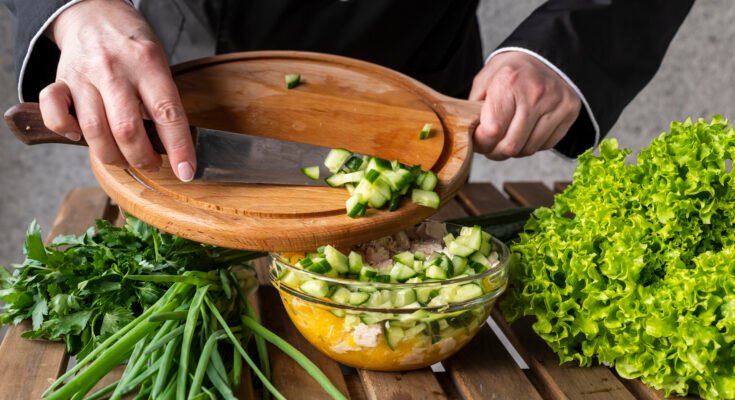Introduction
Imagine whipping up a delicious meal while contributing positively to the environment. Sounds perfect, right? Welcome to the world of zero waste cooking, where every part of your ingredients finds a place in your recipes. This blog post is your guide to adopting this eco-friendly approach in your kitchen. By the end, you’ll know how to create sustainable recipes using everything from root to stem, and you’ll feel inspired to minimize waste in your culinary adventures.
What is Zero Waste Cooking?
Zero waste cooking is all about using every part of your ingredients and leaving nothing to waste. It’s an approach that turns peels, stems, roots, and even seeds into delicious components of your meals. Not only does this reduce food waste, but it also maximizes the nutritional value you get from your ingredients.
The concept is simple yet profound. When we discard parts of vegetables like carrot tops or broccoli stems, we’re throwing away valuable nutrients. Zero waste cooking encourages us to rethink these ‘scraps’ and find creative ways to incorporate them into our dishes.
The Environmental Impact of Food Waste
Food waste is a massive issue that’s often overlooked. When food ends up in landfills, it decomposes and releases methane, a greenhouse gas far more potent than carbon dioxide. By adopting zero waste cooking, we can significantly cut down on this waste and reduce our carbon footprint.
According to the Food and Agriculture Organization (FAO) of the United Nations, approximately one-third of all food produced globally is wasted. This equates to about 1.3 billion tons annually. Imagine the environmental benefits if even a fraction of households started practicing zero waste cooking!
Eco-Friendly Ingredients to Stock Up On
When aiming for a zero waste kitchen, certain ingredients are more versatile than others. Root vegetables like carrots, beets, and radishes are excellent because you can use both the root and the greens. Herbs with edible stems like parsley and cilantro are also great choices.
Additionally, fruits with edible skins or seeds, such as apples and watermelons, offer numerous options for minimizing waste. Stocking up on these eco-friendly ingredients will make your zero waste cooking endeavors much more manageable.
Sustainable Recipes for Every Meal
Breakfast
Kickstart your day with a zero waste breakfast by making smoothies that use fruit peels and vegetable tops. For example, blend banana peels with your regular smoothie ingredients for added nutrients. Or, make a savory breakfast bowl using leftover vegetable scraps and herbs.
Lunch
For lunch, consider a hearty root-to-stem salad. Use every part of your vegetables, including carrot tops and beet greens, to create a nutrient-packed meal. Add some roasted chickpea stems for an extra crunch and plant-based protein.
Dinner
Dinner offers another opportunity to get creative. How about a soup made from vegetable peel broth? Simmer your peels and stems to create a flavorful base, then add any leftover vegetables and grains for a filling and sustainable meal.
Creative Uses for Vegetable Scraps
Vegetable Peel Chips
Instead of discarding potato and carrot peels, turn them into crispy chips. Toss them in olive oil, sprinkle with salt, and bake until crispy. These make for a delicious and eco-friendly snack.
Stem Pesto
Broccoli and kale stems often go to waste but are perfect for making pesto. Blend the stems with garlic, olive oil, nuts, and cheese for a tasty sauce that pairs well with pasta or as a spread on sandwiches.
Root Vegetable Stock
Save your vegetable trimmings and roots to make a hearty stock. This can be used as a base for soups, stews, and sauces, ensuring that nothing in your kitchen goes to waste.
The Nutritional Benefits of Root to Stem Eating
Eating from root to stem doesn’t just benefit the environment; it also packs a nutritional punch. Many discarded parts of vegetables are rich in vitamins and minerals. For example, carrot tops are high in vitamin K, while broccoli stems are loaded with fiber.
By incorporating these parts into your meals, you’ll boost your intake of essential nutrients, supporting overall health and well-being. Zero waste cooking truly is a win-win for you and the planet.
Practical Tips for Minimizing Kitchen Waste
Plan Your Meals
One of the most effective ways to reduce waste is by planning your meals. This ensures you buy only what you need and use up all your ingredients before they spoil.
Store Food Properly
Proper storage can extend the life of your ingredients. For example, keep herbs fresh by storing them in a glass of water, and use breathable bags for vegetables to prevent them from wilting.
Compost What You Can’t Use
Despite your best efforts, some waste is inevitable. Composting is an excellent way to ensure that any inedible scraps still contribute positively to the environment.
Building a Community of Zero Waste Cooks
Joining a community of like-minded individuals can provide support and inspiration for your zero waste cooking journey. Online forums, social media groups, and local workshops are great places to share tips, recipes, and experiences.
Engaging with a community can also help you stay motivated and committed to your sustainable living goals. Plus, it’s always fun to share your culinary creations with others who appreciate the effort you’re making.
Kid-Friendly Zero Waste Recipes
Getting kids involved in zero waste cooking can be both educational and fun. Try making fruit leather from apple peels or veggie scrap muffins. These activities teach children the value of food and the importance of sustainability from a young age.
Engaging kids in the kitchen also encourages them to develop healthy eating habits and an appreciation for homemade meals. Plus, they’ll love the creative process and the tasty results!
The Future of Sustainable Cooking
Zero waste cooking is more than a trend; it’s a movement towards a more sustainable future. As more people adopt this practice, we can collectively make a significant impact on reducing food waste and protecting our planet.
Businesses and restaurants are also starting to take note, with many incorporating zero waste principles into their operations. This shift towards sustainability is promising and shows that every effort, big or small, contributes to a greener world.
Real-Life Success Stories
Hearing about others’ success with zero waste cooking can be incredibly motivating. For instance, Chef Dan Barber’s restaurant, Blue Hill, has gained fame for its innovative use of food scraps. Similarly, countless home cooks have shared stories of how they’ve transformed their kitchens and reduced waste through creative cooking.
These real-life examples demonstrate that zero waste cooking is achievable for anyone, regardless of their starting point. With a bit of creativity and commitment, you too can make a difference.
Conclusion
Zero waste cooking offers a practical solution to food waste, providing numerous benefits for both our health and the environment. By utilizing every part of your ingredients, from root to stem, you can create delicious and sustainable recipes that leave nothing to waste.
Ready to start your zero waste cooking adventure? Begin by incorporating some of the tips and recipes shared in this post. And for further guidance and inspiration, consider joining a community of eco-conscious cooks. Together, we can make a significant impact, one meal at a time. Happy cooking!




